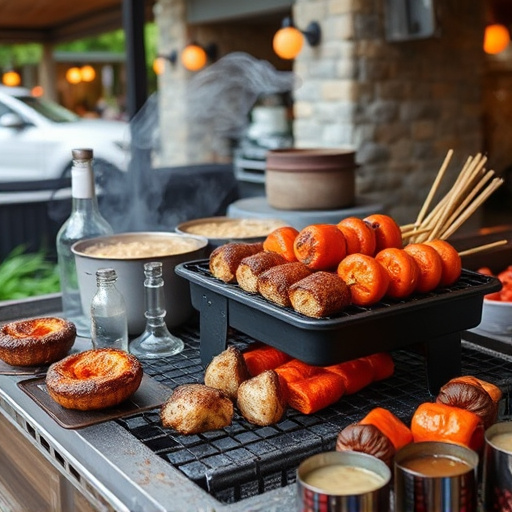Choosing the perfect Ribs BBQ Recipe starts with understanding rib types: texture, flavor, and bone structure vary between baby back, spare ribs, and St. Louis-style. Select fresh, high-quality cuts (USDA Prime/Choice) with good marbling for juicy tenderness. Consider rib age for flavor intensity; store properly to maintain quality. Seasoning is key—dry rubs or marinades enhance taste, texture, and grilling experience.
Looking to perfect your Ribs BBQ Recipe? Selecting the right cut is key for a mouthwatering grill experience. This guide breaks down essential tips for choosing the best ribs, from understanding various rib types and identifying quality cuts to mastering seasoning techniques. Learn how marbling, age, bone structure, and the art of seasoning can elevate your ribs from average to exceptional.
- Understanding Different Rib Types
- Quality Cuts: What to Look For
- Consider Marbling for Flavor
- Age and Storage Impact
- Choosing the Right Bone Structure
- Seasoning Techniques for Enhanced Taste
Understanding Different Rib Types
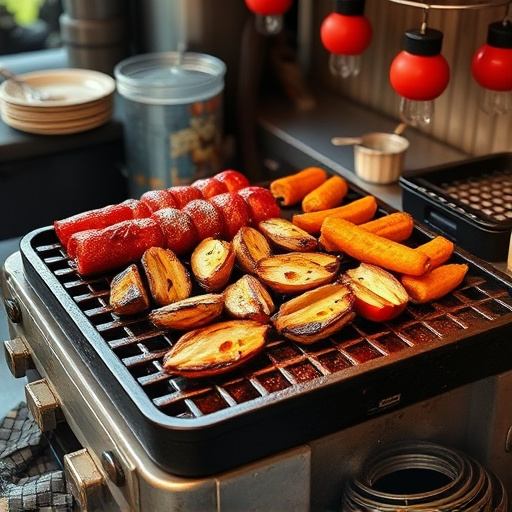
When it comes to grilling ribs, understanding the different types available is half the battle won. You’ve got your traditional baby back ribs, known for their meaty texture and mild flavor, perfect for those who love a classic Ribs BBQ Recipe. Then there are spare ribs, often considered more fatty but incredibly juicy when cooked right, offering a richer taste experience.
Each rib type has its unique characteristics: some are leaner, ideal for health-conscious grillers, while others pack more fat, ensuring tender, mouthwatering bites. Knowing these variations allows you to choose the perfect ribs according to your preference and cooking method, whether it’s slow-smoking or high-heat grilling.
Quality Cuts: What to Look For
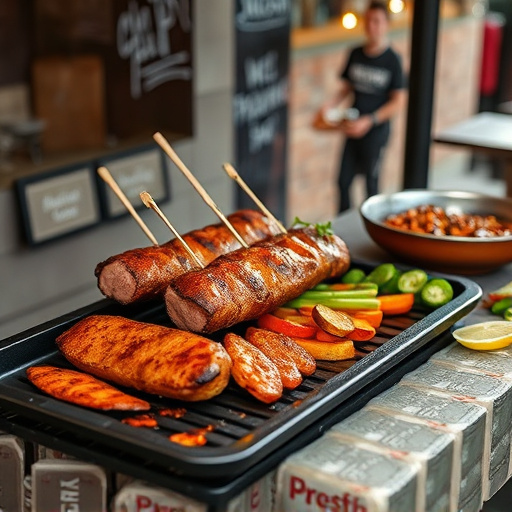
When selecting ribs for grilling, understanding quality cuts is key. Look for ribs that are meaty and have a good marbling of fat. The meat should be tender and easily pullable, with minimal bones. Avoid ribs that are overly lean or have large chunks of visible fat, as these can become tough during cooking. A good Ribs BBQ Recipe starts with high-quality cuts, ensuring a flavorful and succulent end product.
Check for signs of freshness; the meat should be vibrant and have a slight shine. Properly stored ribs will have a firm texture, and the packaging should be sealed to maintain their quality. Opting for USDA Prime or Choice grades guarantees a superior flavor profile due to higher marbling, which adds richness and moisture to your Ribs BBQ Recipe.
Consider Marbling for Flavor
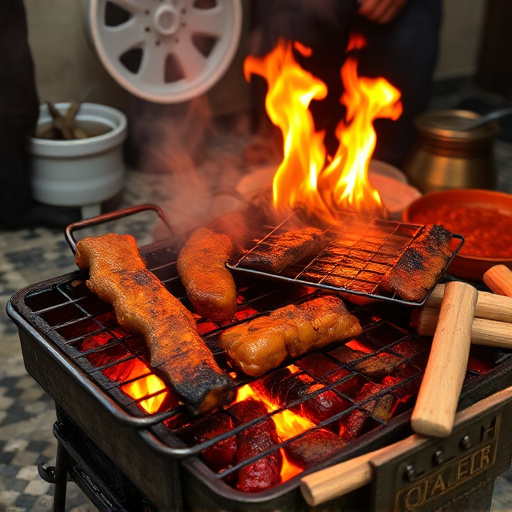
When selecting ribs for grilling, don’t overlook the importance of marbling in the meat. Marbling refers to the intricate network of fat streaks within the muscle fibers. This isn’t just about visual appeal; it significantly influences the flavor and tenderness of your ribs. A well-marbled rib will offer a rich, succulent taste experience, ensuring each bite is juicy and memorable.
When searching for the perfect ribs for your BBQ recipe, look for cuts with substantial marbling. The more uniform and abundant the fat streaks, the better the flavor profile. This is particularly true for St. Louis-style ribs or baby back ribs, which are popular choices due to their natural marbling. Remember, a good Ribs BBQ Recipe starts with high-quality meat that promises a delightful culinary journey.
Age and Storage Impact
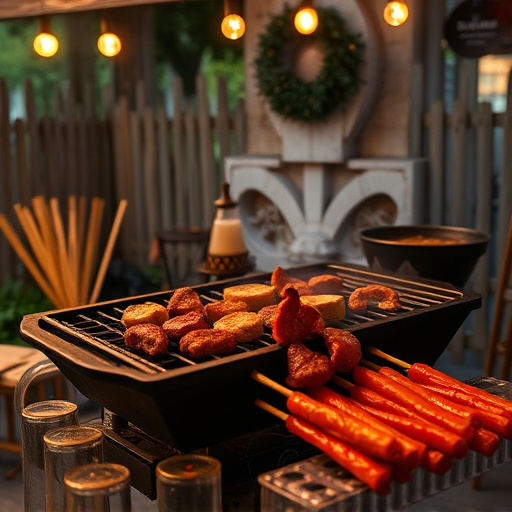
The age of the ribs is a critical factor in their flavor and tenderness. Younger ribs, often from pigs less than 6 months old, tend to be leaner with a milder taste, ideal for those who prefer a cleaner BBQ recipe without too much fat. As pigs age, typically between 6-12 months, their ribs develop more marbling, making them juicier but potentially adding a richer, slightly saltier flavor. This age group is perfect for those who enjoy a heartier Ribs BBQ Recipe with deeper, more complex tastes.
Proper storage plays a significant role in maintaining the quality of ribs. After purchase, keep them refrigerated to slow down bacterial growth and maintain freshness. For long-term storage, consider freezing; this process can lock in the ribs’ flavor and texture. When thawing, ensure it’s done safely, either in the refrigerator or using cold water, to prevent bacterial contamination. Proper handling and storage ensure that your Ribs BBQ Recipe starts with the best possible ingredients.
Choosing the Right Bone Structure
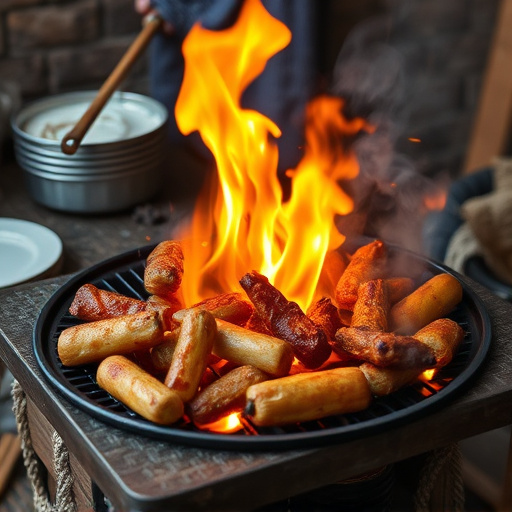
When selecting ribs for grilling, understanding the bone structure is key. Look for ribs with a good balance between meaty portions and manageable bone sizes. Traditional baby back ribs are a popular choice due to their mild flavor and relatively small bones, making them easy to eat and ideal for a variety of Ribs BBQ recipes. For a different experience, consider spare rib or St. Louis-style ribs, which offer a richer taste but require more careful handling due to their larger bones.
The bone structure not only influences how the ribs cook but also determines the overall dining experience. Ribs with well-placed and sized bones can be easier to pick up and enjoy, enhancing the enjoyment of your Ribs BBQ. Remember, the right bone structure contributes significantly to a satisfying grilling session, ensuring each bite is both flavorful and convenient.
Seasoning Techniques for Enhanced Taste
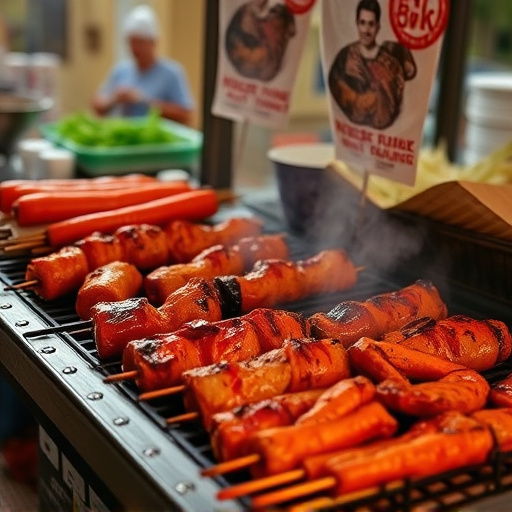
Seasoning plays a pivotal role in elevating the taste of ribs from ordinary to extraordinary. When preparing your ribs for grilling, consider using dry rubs or marinades as these techniques can profoundly impact the overall flavor profile. Dry rubs are straightforward; you mix spices like paprika, garlic powder, salt, pepper, and brown sugar, then rub this mixture all over the ribs before cooking. This method infuses the meat with a burst of savory flavors that cling to each tender rib.
For a more immersive experience, marinades offer a deeper level of taste exploration. Combine ingredients such as soy sauce, vinegar, olive oil, chopped herbs (thyme, rosemary), and minced garlic in a container and submerge your ribs for several hours or even overnight. The acid in the vinegar helps break down the meat’s connective tissues, making it more tender, while the herbs and spices add complexity to the flavors that cook into the ribs during grilling.
